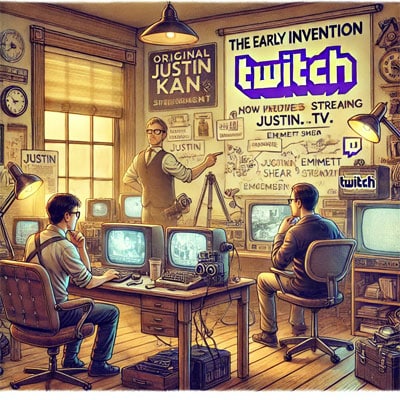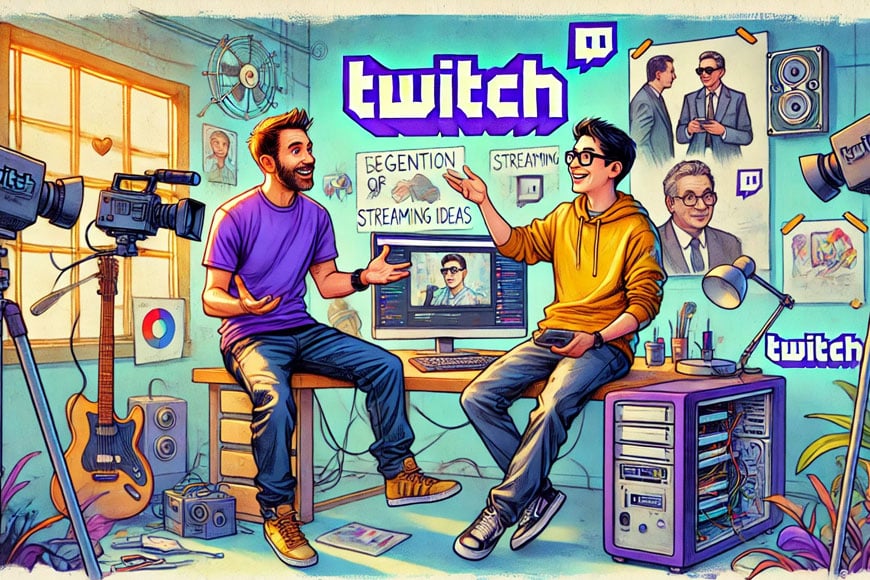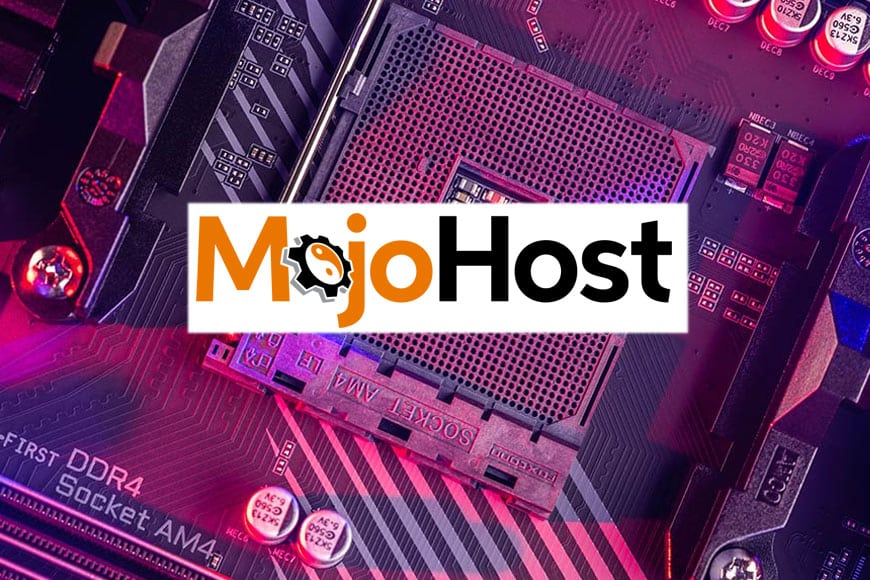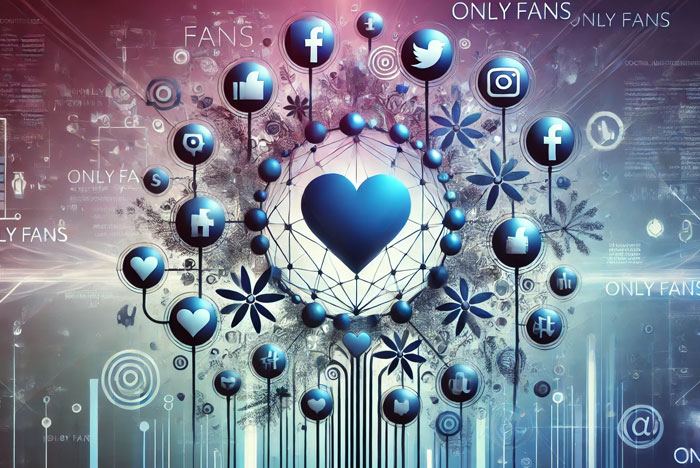Twitch is everywhere now, but its story? That’s something most people don’t know. It all began with a pretty wild idea in 2007. Justin Kan and his friend Emmett Shear decided to launch an experimental site called Justin.tv. And the concept? Justin would stream his entire life online, 24/7. Crazy, right? This “lifecasting” was brand new, and people couldn’t look away.
From Justin’s Life to Streaming for All
At first, it was just Justin broadcasting his daily routine, like a live reality show. Viewers could watch him grab coffee, work, hang out with friends — literally everything. It was raw, unscripted, and totally captivating. As Justin’s livestream got more popular, he and Emmett realized something: people were loving the idea of live, unfiltered moments. But they wanted more. It wasn’t just Justin’s life they were interested in; it was the idea of streaming anyone’s life or passions.
So, Justin.tv opened up for everyone to create their own live channels. And here’s where things took off. People started streaming everything — music, art, cooking, and yes, gaming. Gaming content began to dominate, building a whole new audience of fans who wanted to watch, play, and discuss games live. Soon enough, Justin.tv’s biggest draw was gaming, and it wasn’t just a niche interest anymore. The community was growing fast.
The Gaming Revolution on Justin.tv
It became obvious that gaming wasn’t just “part” of Justin.tv — it was turning into the main event. This was something brand new: fans watching each other play games, with live commentary, real-time reactions, and an audience that could actually interact with the streamers. Viewers could type messages, ask questions, and get shoutouts right then and there. It wasn’t just passive viewing; it was interactive entertainment.
Justin and Emmett saw the potential and made a bold move. In 2011, they created a separate platform just for gaming streams: Twitch.tv. The name “Twitch” was a nod to the quick reflexes often needed in video games. This wasn’t just a new website; it was a dedicated space for the growing gaming community.
Twitch Takes Over: The Go-To Platform for Gamers

By 2013, Twitch was hosting millions of viewers every month. And they weren’t just watching; they were tuning in for hours, engaging in live chats, and supporting their favorite streamers with donations and subscriptions. Twitch became the ultimate hub for gamers and gaming culture, and the numbers kept growing.
The Amazon Acquisition: Twitch Levels Up
Twitch was now one of the fastest-growing websites in the world, and big companies started noticing. In 2014, Amazon bought Twitch for nearly $1 billion. That’s right — Amazon saw the potential and wanted in. And with Amazon’s support, Twitch had the resources to go even bigger.
With Amazon came better infrastructure, expanded tech, and new perks. One of the coolest perks? Twitch Prime (now known as Prime Gaming), which gave Amazon Prime members free monthly subscriptions, in-game loot, and other bonuses on Twitch. Suddenly, it wasn’t just about watching streams; fans could actively support their favorite streamers in a new way. Amazon’s involvement allowed Twitch to push the boundaries even further, improving its quality and scaling up its features to handle a rapidly growing user base.
Twitch Expands Beyond Gaming
But Twitch didn’t stop at gaming. While it will always be known as the ultimate gaming platform, it started welcoming all sorts of content. Creative channels began popping up, where artists, musicians, and cooks could stream their work and interact with fans in real time. People could watch painters complete masterpieces, musicians jam, and chefs whip up dishes while chatting with viewers.
Then came the “Just Chatting” category, a game-changer. It was a space where streamers could talk directly to their fans without focusing on a specific game or activity. Just Chatting became a massive hit, especially as more influencers and celebrities joined Twitch to connect with audiences in a laid-back, personal way. Now, people stream all kinds of things — from talk shows and fitness workouts to Q&A sessions and just hanging out.
The Impact on Pop Culture
Twitch became more than a streaming site. It turned into a cultural phenomenon. Streamers like Ninja, Pokimane, and Shroud became household names, attracting millions of followers and even collaborating with major brands and companies. Events like TwitchCon brought fans and streamers together in real life, celebrating everything Twitch has to offer. Twitch also became a place where gaming companies, e-sports teams, and sponsors gathered to reach the highly engaged gaming audience directly.
The platform’s unique culture, with terms like “subs,” “emotes,” “raids,” and “bits,” has become part of internet slang. Fans don’t just watch passively; they chat, send virtual gifts, and become part of a community. Streamers often have loyal fan bases who tune in daily, showing that Twitch isn’t just about content — it’s about building real connections.
Twitch Today and the Future
Today, Twitch is a major player in the entertainment world. It has millions of active daily users who spend hours on the site, not only watching but interacting. It has shifted from being just a gaming platform to becoming a space for all kinds of live-streamed experiences. The platform has set a new standard for live content, showing just how powerful real-time interaction can be.
And the future? Twitch is expected to keep growing, pushing the boundaries of live entertainment even further. As it continues to evolve, Twitch remains at the forefront of digital culture, influencing how we interact online. What started as a quirky lifelog experiment has turned into a powerhouse, reshaping the entertainment landscape and bringing people together through shared interests.
Twitch isn’t just a website — it’s a community, a movement, and a way for fans and creators to connect like never before. And that’s what makes it so powerful.










